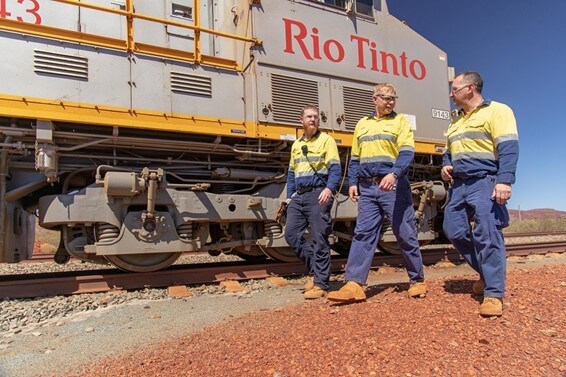Rio Tinto and BlueScope will work together to explore avenues for low carbon steelmaking using Pilbara iron ores, including the use of clean hydrogen to replace coking coal at BlueScope’s Port Kembla steel mill. The two companies have signed a Memorandum of Understanding (MOU) to research and design low-emission processes for the steel value chain, including iron ore processing, iron and steelmaking and related technologies.
This agreement consolidates the relationship between the two companies, which were already working on joint research into new technologies to reduce carbon emissions from existing iron and steel manufacturing processes. It will also allow more projects to be added as technologies mature.
Rio Tinto and BlueScope will prioritise the study of using green hydrogen at the Port Kembla steel mill in Australia to directly reduce Pilbara iron ores into a product that could then be processed in an electric melter to produce metallic iron suitable for conversion to steel.
“We are very pleased to sign this memorandum of understanding with leading steelmaker BlueScope, a key customer of ours in Australia, and to extend our partnership into low carbon steel and ironmaking,” says Rio Tinto Iron Ore chief executive Simon Trott.
In this regard he further notes that “this partnership will benefit from BlueScope’s experience and expertise in the use of electric melters at its New Zealand steel mill, Rio Tinto’s experience in the Atlantic direct reduction market and Rio Tinto and BlueScope’s R&D capability and expertise in iron ore processing. It’s early days, but given that both BlueScope and Rio Tinto are committed to net zero carbon emissions by 2050, we realise we need to investigate multiple avenues and establish partnerships across the steel value chain”.
BlueScope CEO Mark Vassella adds: “Rio Tinto supplies most of the iron ore to our Port Kembla plant. It’s a natural fit for both of us and a significant opportunity for Australian steel and mining to explore ways to contribute to emissions reduction targets. This is an important program, one that will need broad support from governments, regulators, customers and suppliers. At a time when much is being talked about and much is expected on climate, this is an example of two major Australian companies moving forward with real action. We are putting our dollars and our people on the frontline to tackle climate change.”
Initially, the first phase of the collaboration will consist of determining the scale of a pilot plant to be installed at the Port Kembla steelworks, consisting of a hydrogen electrolyser, a direct reduction process and a melter.
Rio Tinto has also announced new targets to reduce its Scope 1 and 2 carbon emissions by 50% by 2030, more than three times its previous target, and a 15% reduction in emissions by 2025, five years earlier than before. These targets are backed with direct investment of around $7.5 billion to reduce emissions between 2022 and 2030.









